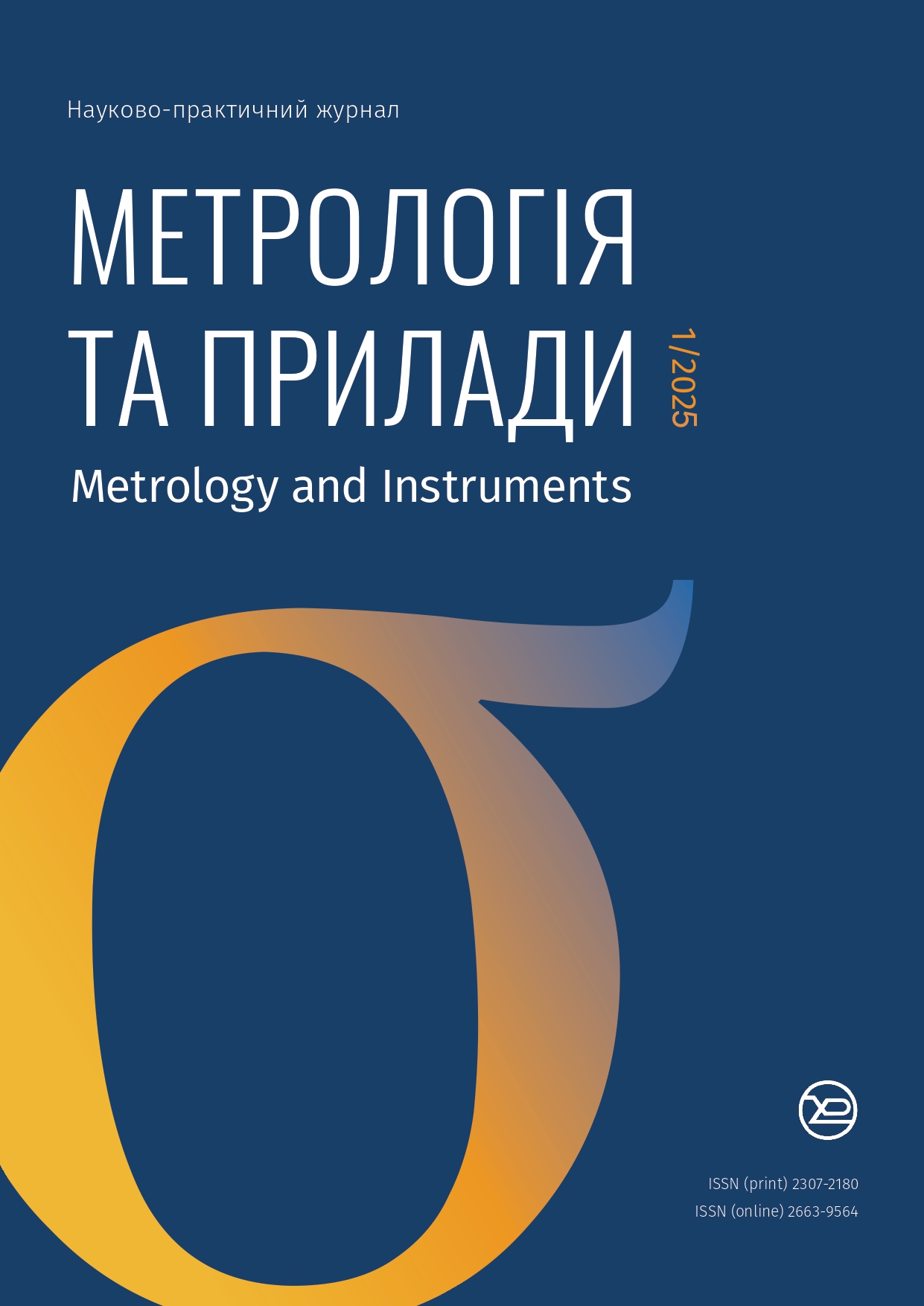Теоретичні та практичні аспекти методу коригування невизначеності багатовимірних вимірювань за допомогою коефіцієнта Бірге
DOI:
https://doi.org/10.30837/2663-9564.2025.1.02Ключові слова:
темна невизначеність, багатовимірний метод коефіцієнта Бірге, багатовимірна модель масштабу місця, багатовимірна модель випадкових ефектівАнотація
У статті ми представляємо багатовимірну модель масштабу розташування, пов'язану з багатовимірним методом коефіцієнта Бірге, новим підходом до моделювання темної невизначеності, яка зазвичай присутня, коли результати окремих досліджень об'єднуються. В емпіричній ілюстрації цей підхід застосовується до результатів вимірювань, що використовуються для вивчення ефективності лікування гіпертензії. Результати порівнюються з результатами, отриманими при використанні багатовимірної моделі випадкових ефектів. Обидві моделі підтверджують, що лікування гіпертензії може знизити систолічний та діастолічний артеріальний тиск, а також призвести до значного зниження ризику серцево-судинних захворювань та інсульту. Крім того, багатовимірний метод коефіцієнта Бірге дає точніші оцінки загального вектора середнього, що призводить до значно менших стандартних помилок та вужчих довірчих інтервалів.
Посилання
Birge, R. T. (1932). The calculation of errors by the method of the least squares. Physical Reviev, 40(2):207–227.
Bodnar, O. and Bodnar, T. (2023). Bayesian estimation in multivariate inter-laboratory studies with unknown covariance matrices. Metrologia, 60(5):054003.
Bodnar, O. and Bodnar, T. (2024a). Gibbs sampler approach for objective Bayesian inference in elliptical multivariate meta-analysis random effects model. Computational Statistics & Data Analysis, 197:107990.
Bodnar, O. and Bodnar, T. (2024b). Objective Bayesian meta-analysis based on generalized marginal multivariate random effects model. Bayesian Analysis, 19(2):531–564.
Bodnar, O. and Bodnar, T. (2025). Birge ratio method for modeling dark uncertainty in multivariate meta-analyses and inter-laboratory studies. Journal of Multivariate Analysis, 205:105376.
Bodnar, O. and Elster, C. (2014). On the adjustment of inconsistent data using the Birge ratio. Metrologia, 51(5):516.
Bodnar, O. and Eriksson, V. (2023). Bayesian model selection: Application to the adjustment of fundamental physical constants. The Annals of Applied Statistics, 17(3):2118– 2138.
Bodnar, O., Link, A., Arendack´a, B., Possolo, A., and Elster, C. (2017). Bayesian estimation in random effects meta-analysis using a non-informative prior. Statistics in Medicine, 36(2):378–399.
Bodnar, O., Link, A., and Elster, C. (2016). Objective Bayesian inference for a generalized marginal random effects model. Bayesian Analysis, 11(1):25–45.
Buchberger, B. (2001). Gröbner bases and systems theory. Multidimensional Systems and Signal Processing, 12:223–251.
Buchberger, B. and Winkler, F. (1998). Gr¨obner Bases and Applications. Cambridge University Press, Cambridge.
Cox, D., Little, J., O’shea, D., and Sweedler, M. (2015). Ideals, Varieties, and Algorithms. Springer, Cham.
Gasparrini, A., Armstrong, B., and Kenward, M. (2012). Multivariate meta-analysis for non-linear and other multi-parameter associations. Statistics in Medicine, 31(29):3821– 3839.
Guolo, A. and Varin, C. (2017). Random-effects meta-analysis: The number of studies matters. Statistical Methods in Medical Research, 26(3):1500–1518.
Hardy, R. J. and Thompson, S. G. (1996). A likelihood approach to meta-analysis with random effects. Statistics in Medicine, 15(6):619–629.
Jackson, D., White, I. R., and Riley, R. D. (2013). A matrix-based method of moments for fitting the multivariate random effects model for meta-analysis and meta-regression. Biometrical Journal, 55(2):231–245.
Jackson, D., White, I. R., and Riley, R. D. (2020). Multivariate meta-analysis. In Schmid, C. H., Stijnen, T., and White, I. R., editors, Handbook of Meta-Analysis, pages 163–186. CRC Press.
Jackson, D., White, I. R., and Thompson, S. G. (2010). Extending DerSimonian and Laird’s methodology to perform multivariate random effects meta-analyses. Statistics in Medicine, 29(12):1282–1297.
Riley, R., Price, M., Jackson, D., Wardle, M., Gueyffier, F., Wang, J., Staessen, J. A., and White, I. (2015). Multivariate meta-analysis using individual participant data. Research synthesis methods, 6(2):157–174.
Rukhin, A. L. (2013). Estimating heterogeneity variance in meta-analysis. Journal of the Royal Statistical Society: Ser. B, 75:451–469.
Strawderman, W. E. and Rukhin, A. L. (2010). Simultaneous estimation and reduction of nonconformity in interlaboratory studies. Journal of the Royal Statistical Society: Ser. B, 72:219–234.
Tiesinga, E., Mohr, P. J., Newell, D. B., and Taylor, B. N. (2021). CODATA recommended values of the fundamental physical constants: 2018. Reviews of Modern Physics, 93(2):025010.
Turner, R. M., Jackson, D., Wei, Y., Thompson, S. G., and Higgins, J. (2015). Predictive distributions for between-study heterogeneity and simple methods for their application in Bayesian meta-analysis. Statistics in Medicine, 34(6):984–998.
Veroniki, A. A., Jackson, D., Bender, R., Kuss, O., Langan, D., Higgins, J. P., Knapp, G., and Salanti, G. (2019). Methods to calculate uncertainty in the estimated overall effect size from a random-effects meta-analysis. Research Synthesis Methods, 10(1):23–43.
Wang, J.-G., Staessen, J. A., Franklin, S. S., Fagard, R., and Gueyffier, F. (2005). Systolic and diastolic blood pressure lowering as determinants of cardiovascular outcome. Hypertension, 45(5):907–913.
Weise, K. and Wöger, W. (2000). Removing model and data non-conformity in measurement evaluation. Measurement Science and Technology, 11(12):1649.




